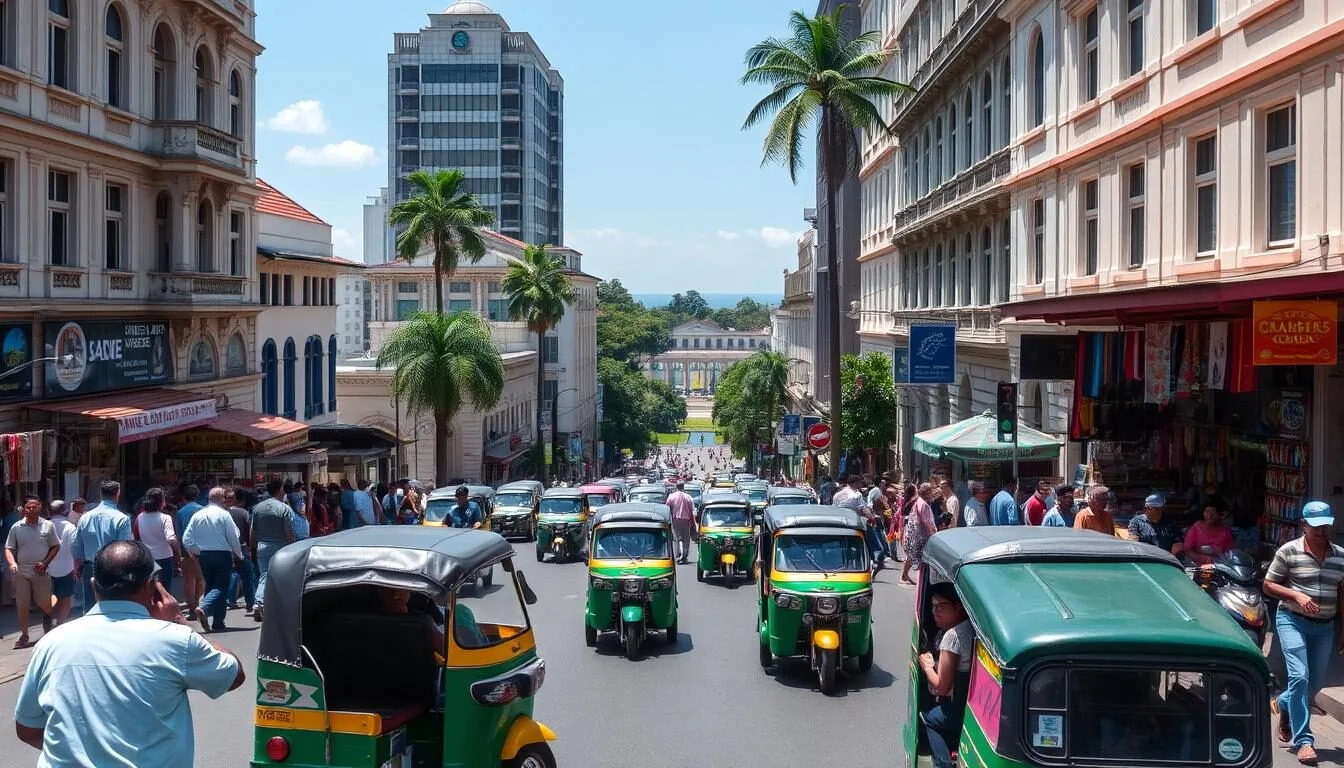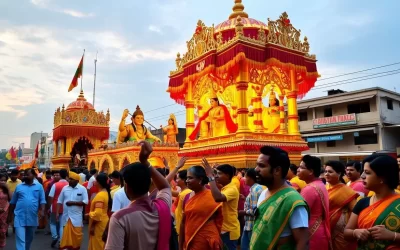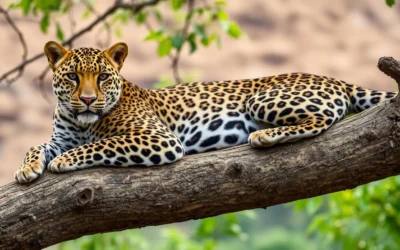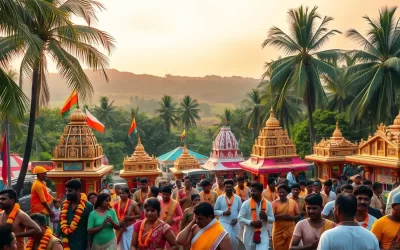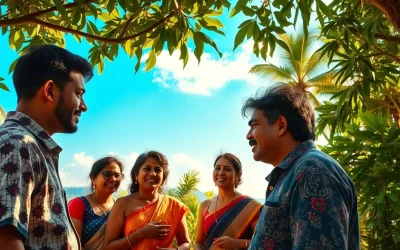✓ Accommodations ✓ Flights ✓ Rental Cars
You might be surprised to learn that Colombo, the largest city in Sri Lanka, is a treasure trove of history, culture, and modern attractions waiting to be explored.
While Sri Lanka is renowned for its stunning beaches and wildlife, Colombo is a city that will captivate you with its unique blend of colonial architecture, vibrant markets, and delicious cuisine.
As you wander through the city, you’ll uncover the rich cultural heritage and experience the warm hospitality that makes Colombo a must-visit destination. With its fascinating mix of old and new, Colombo is an essential part of any Sri Lankan itinerary.
Discovering the Charm of Colombo
You’re about to discover the charm of Colombo, a city that has been shaped by various influences throughout its history, from colonial rule to its current status as Sri Lanka’s capital. As you explore this vibrant city, you’ll uncover a rich tapestry of cultures, reflected in its architecture, cuisine, and daily life.
A Brief History of Sri Lanka’s Capital
Colombo’s history is as fascinating as it is complex, with influences from various cultures that have left their mark on the city. Strategically located on the Silk Road, Colombo was an important stopover for traders and travelers. The city’s history as a port city attracted Portuguese, Dutch, and British colonizers, each contributing to its unique architectural and cultural heritage. You can still see remnants of this colonial past in the Fort District, where old buildings stand alongside modern structures.
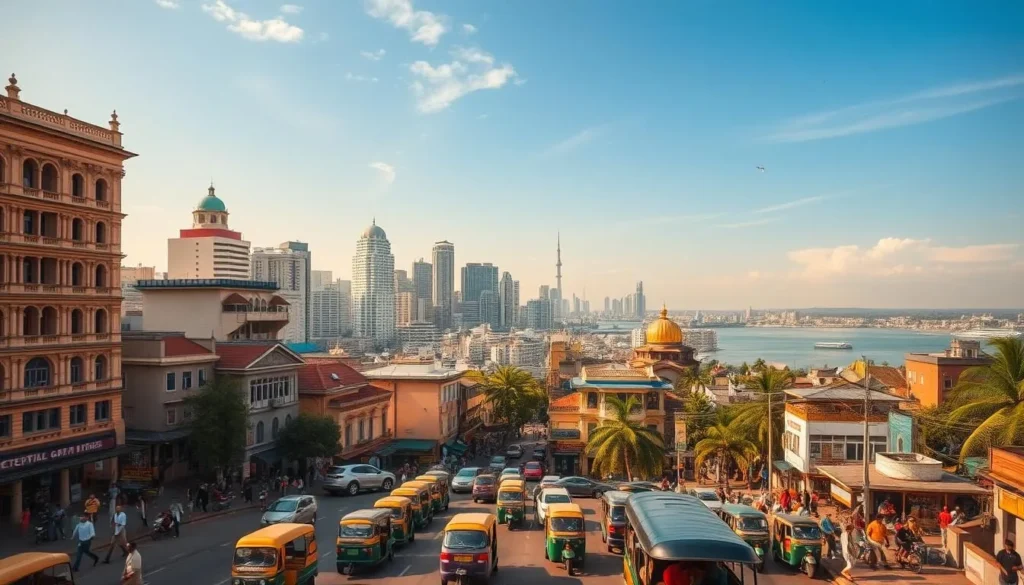
Why Colombo Deserves More Than a Stopover
Colombo is more than just a transit point; it’s a city that deserves to be explored. With its blend of colonial heritage, religious diversity, and modern development, Colombo offers a unique experience that reflects the essence of Sri Lankan life. The city’s resilience in the face of challenges, including the civil war and the 2019 Easter attacks, has transformed it into a vibrant and welcoming destination. By visiting Colombo, you’ll gain an authentic glimpse into Sri Lankan daily life, far removed from the typical tourist trails.
As you explore Colombo, you’ll discover why it’s a city that will leave a lasting impression on you. From its rich history to its modern charm, Colombo is an experience that will stay with you long after you leave.
Exploring Colombo’s Historical Sites
As you explore Colombo, you’ll discover a wealth of historical landmarks that tell the story of the city’s past. The city’s historical sites are a mix of ancient temples, colonial-era buildings, and other significant landmarks that showcase its rich cultural heritage.
Gangaramaya Temple
Gangaramaya Temple is one of Colombo’s most revered Buddhist temples, known for its eclectic architectural style that blends Sri Lankan, Chinese, Indian, and Thai influences. Located by the Beira Lake, the temple complex houses numerous small temples, each containing multiple statues of Buddha. One of the temple’s highlights is its claim to house the smallest Buddha statue in Sri Lanka, visible only with a magnifying glass. The temple’s walls are adorned with beautiful frescoes, adding to its cultural significance.
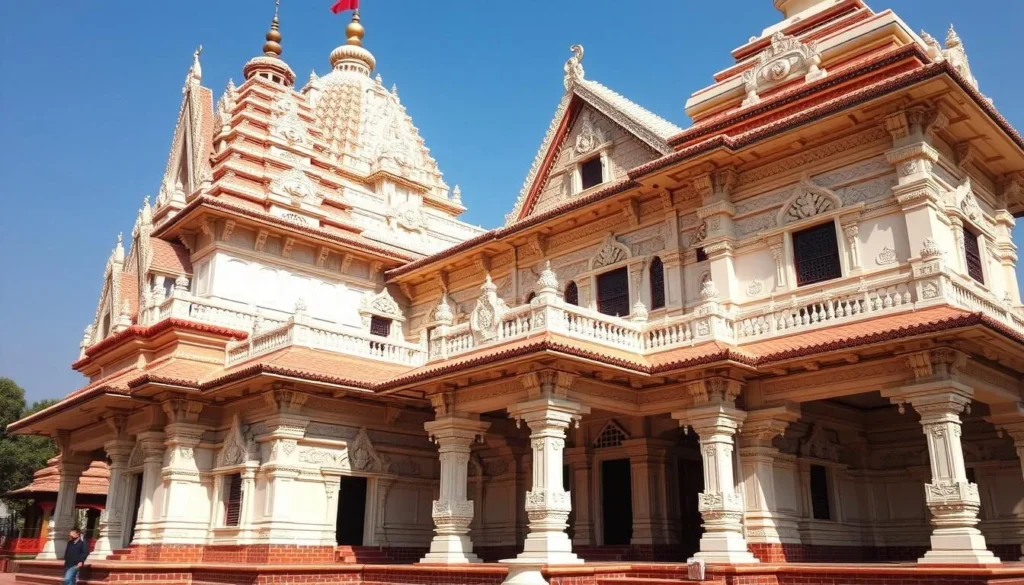
Entry to the temple costs LKR400 per adult, while children can enter for free. The temple is an essential visit for anyone interested in exploring Colombo’s religious and cultural heritage.
Independence Memorial Hall
The Independence Memorial Hall is a significant historical landmark built to commemorate Sri Lanka’s independence from British rule in 1948. Designed after the Royal Audience Hall of the Kingdom of Kandy, the hall is an exemplary model of traditional Kandyan architecture. It serves as a symbol of the country’s struggle for independence and its rich cultural heritage.

This site is a must-visit for history enthusiasts, offering insights into Sri Lanka’s journey to independence.
Old Town Hall
The Old Town Hall is a fascinating piece of British colonial architecture that now houses lifelike wax figures of Colombo’s first councilors seated around a table. This often-overlooked historical site provides a unique glimpse into Colombo’s administrative past and its evolution over time.
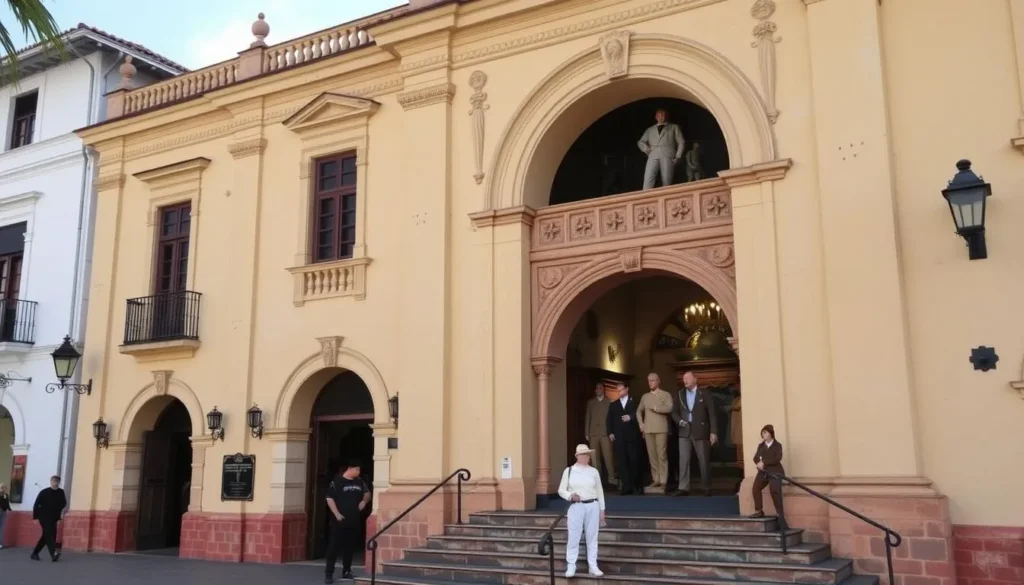
Visiting these historical sites not only allows you to appreciate their architectural beauty but also understand their significance in telling the story of Colombo’s and Sri Lanka’s journey through history.
Colonial Architecture in the Fort District
As you explore Colombo’s historic Fort District, you’ll discover a treasure trove of colonial architecture. This area is a testament to the city’s rich history, with buildings that showcase a mix of Portuguese, Dutch, and British influences.
The Old Dutch Hospital
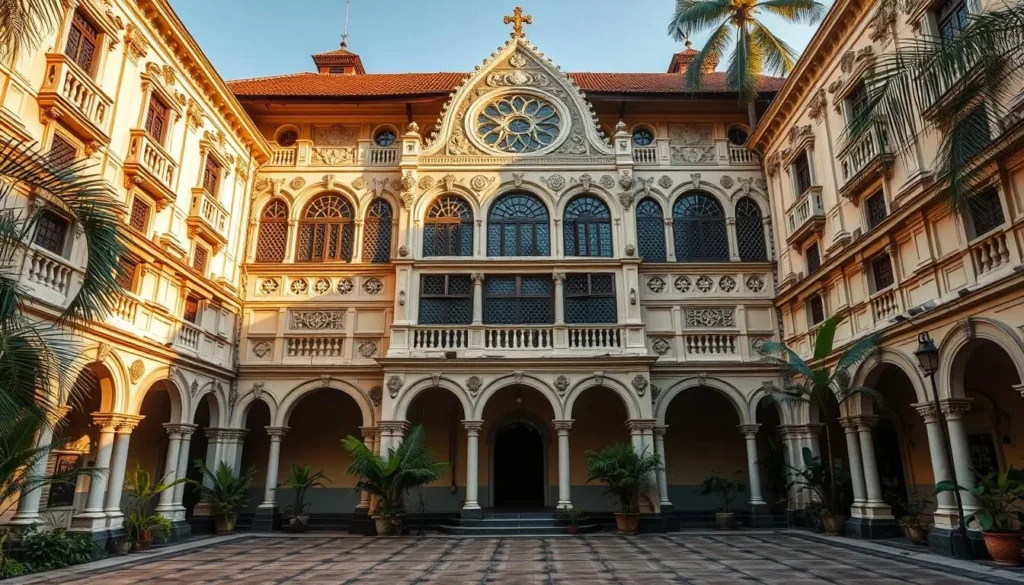
The Old Dutch Hospital, built in 1681, is a prime example of colonial architecture in the Fort District. Originally used to tend to workers of the Dutch East India Company, this historic building has been transformed into a high-end shopping and dining complex. Its clever design features two courtyard areas that create natural airflow, keeping the interior cool even on hot days.
Grand Oriental Hotel
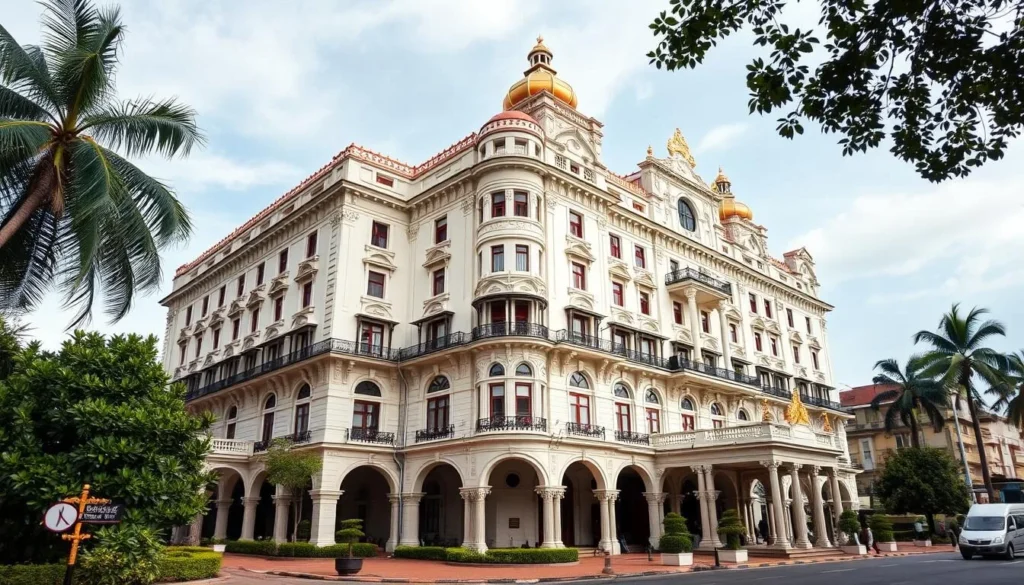
The Grand Oriental Hotel is another historic gem in the Fort District, dating back to the early 1900s. This hotel has hosted notable visitors, including gem traders and military generals, and is a testament to Colombo’s rich cultural heritage. Its elegant architecture and charming atmosphere make it a must-visit destination.
As you explore the Fort District, you’ll appreciate how these colonial buildings have been repurposed for modern use while maintaining their historical significance. The area offers a glimpse into Colombo’s multilayered past, with its impressive collection of architecture from different eras.
Colombo, Sri Lanka: Best Things to Do for History Buffs
For history enthusiasts, Colombo offers a plethora of attractions that bring the city’s rich past to life. As you explore this vibrant city, you’ll discover a blend of historical landmarks, museums, and cultural sites that showcase Sri Lanka’s diverse heritage.
Colombo National Museum
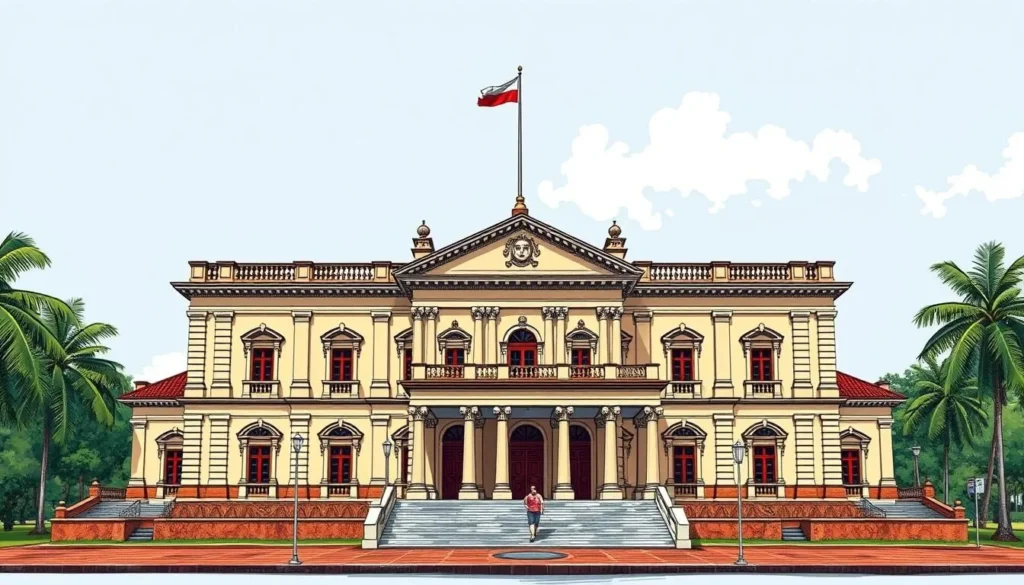
The Colombo National Museum, established in 1877, is a must-visit for anyone interested in Sri Lankan history. With a vast collection of artifacts organized chronologically, the museum offers a comprehensive look at the country’s past, from the Anuradhapura and Polonnaruwa periods to the Kandy era. Highlights include the throne and crown of the last King of Kandy, providing a tangible connection to Sri Lanka’s royal history.
Some key experiences at the Colombo National Museum include:
- Exploring galleries dedicated to different historical periods, showcasing unique art and artifacts.
- Viewing the impressive throne and crown of the last King of Kandy.
The museum is open from 9 am to 5 pm daily, except on public holidays, and has an entry fee of LKR 1000 for adults.
Colombo’s Cricket Museum

For a unique perspective on Sri Lankan culture, visit the Cricket Museum, which celebrates the country’s passion for cricket. With memorabilia and interactive displays, you can learn about Sri Lanka’s cricket history, including their 1996 World Cup victory. This museum showcases why cricket is more than just a sport in Sri Lanka; it’s a national obsession that unites the country.
Some highlights of the Cricket Museum include:
- Discovering Sri Lanka’s cricket achievements and history.
- Understanding the significance of cricket in Sri Lankan culture.
Religious Sites Worth Visiting
As you explore Colombo, you’ll discover a rich tapestry of religious sites that reflect the city’s diverse cultural heritage. From historic mosques to revered churches, these sites are an integral part of Colombo’s identity.
The Red Mosque (Jami Ul-Alfar Mosque)
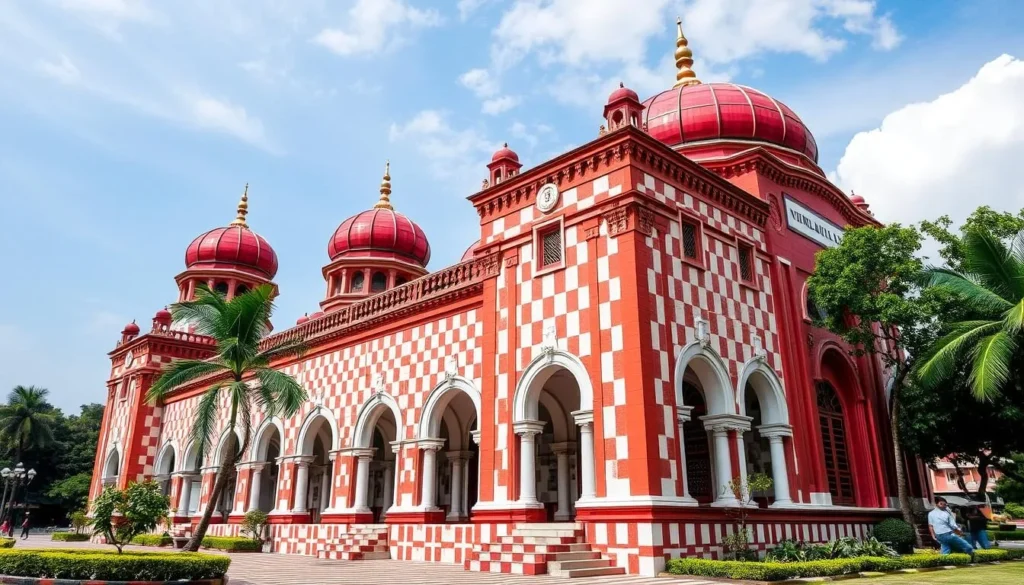
The Red Mosque, also known as the Jami Ul-Alfar Mosque, is a striking landmark in Colombo. Built in the Indo-Saracenic style, this mosque is a blend of Gothic and Neoclassical elements, making it a unique architectural gem. Dating back to 1908, it served as a navigation landmark for sailors approaching the port of Colombo.
The mosque’s incredible red color and chequered patterns make it extremely prominent, even in the midst of Colombo’s bustling streets. When visiting, be sure to cover your hands, legs, and head, and note that the mosque may not be open to visitors at all times.
Catholic Shrine of St. Anthony
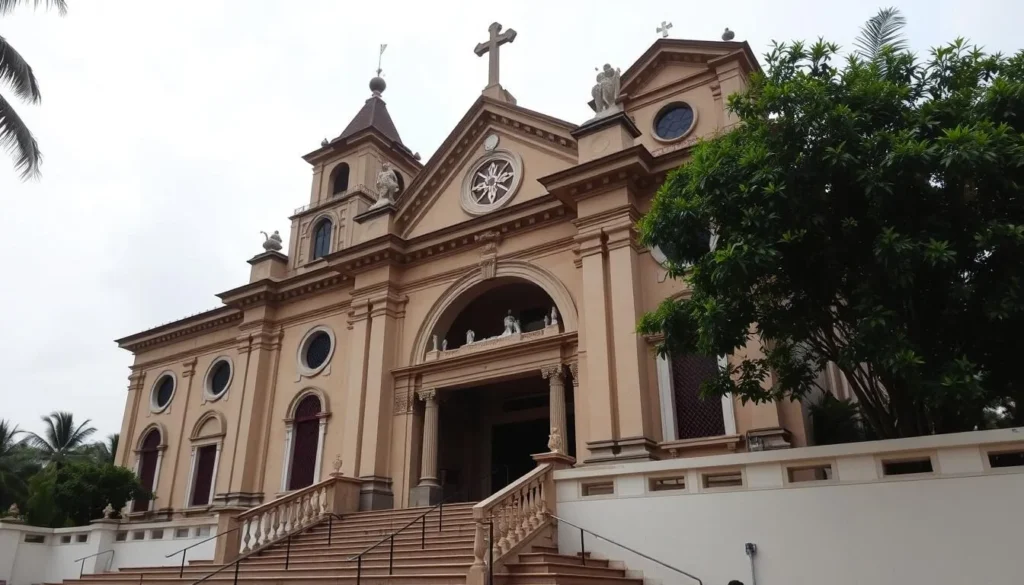
The Catholic Shrine of St. Anthony is an important place of worship for Sri Lanka’s Catholic community. This revered site demonstrates the religious diversity of the country and is a testament to the city’s multicultural identity.
When visiting the shrine, be sure to dress modestly, covering your shoulders and knees as a sign of respect. The shrine is a significant cultural and religious landmark in Colombo, and understanding its importance can enrich your experience of the city.
Visiting these religious sites in Colombo offers a glimpse into the city’s rich cultural heritage and its multicultural identity. By respecting local customs and traditions, you can have a more meaningful and enriching experience.
Markets and Shopping Experiences
Immerse yourself in the vibrant markets of Colombo for an unforgettable experience. The city’s shopping scene is a reflection of its rich culture and history, offering a mix of traditional and modern shopping experiences.
Pettah Market: A Sensory Adventure
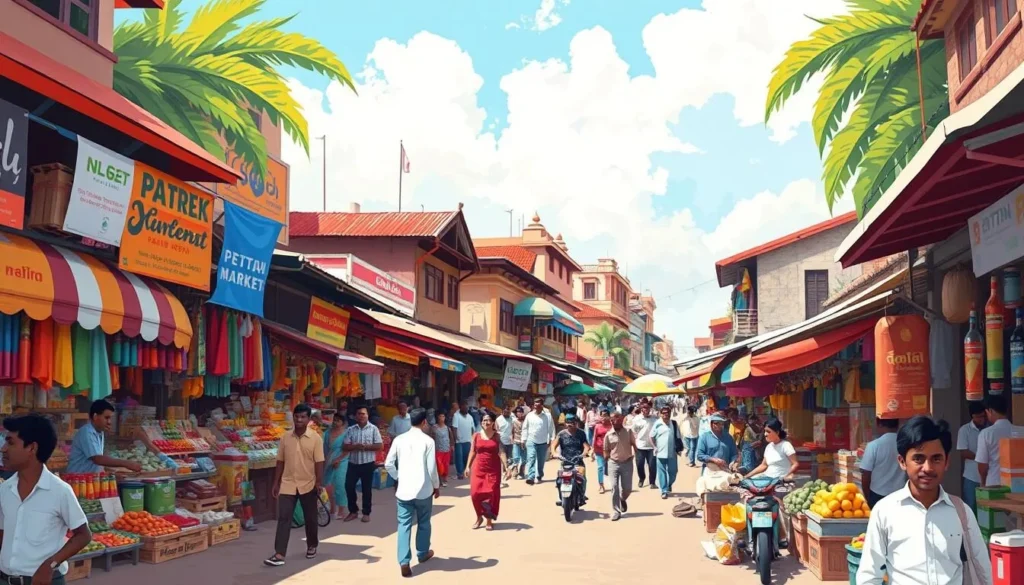
Pettah Market is a sensory overload in the best possible way. As you navigate through the crowded streets of this open-air bazaar, you’ll be surrounded by a kaleidoscope of colors, a cacophony of sounds, and a variety of smells that will tantalize your senses. This is where locals come to shop for everything from electronics and apparel to utensils and food.
The market is organized by trade, with different sections specializing in various goods. For instance, you’ll find gold and jewelry on Sea Street, textiles on Prince Street, and fresh produce in other areas. This maze-like structure makes it an exciting adventure to explore.
- Immerse yourself in the sensory overload of Pettah Market.
- Navigate the market’s maze-like streets organized by trade.
- Engage with local vendors and practice your bargaining skills.
Pettah Floating Market
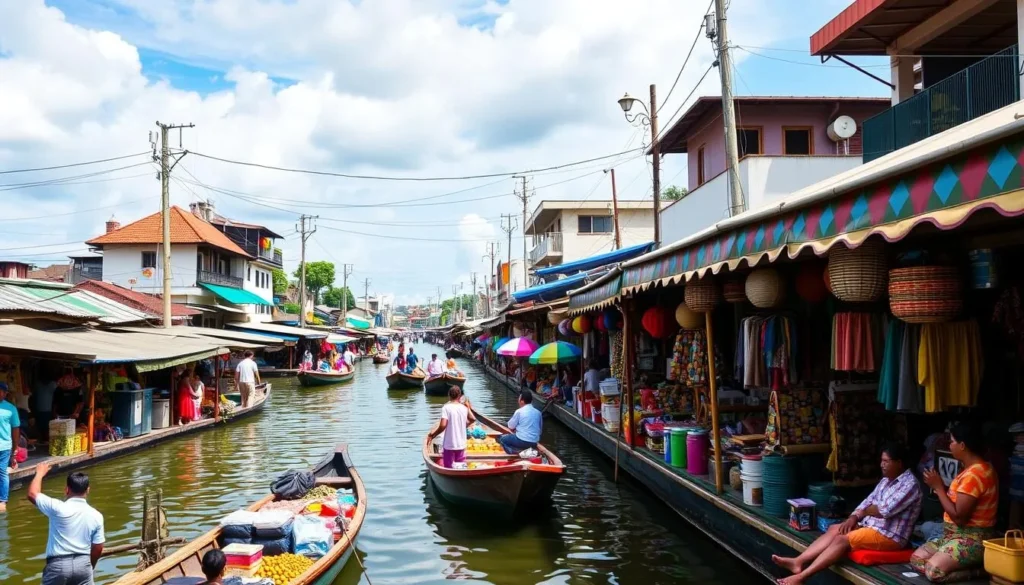
The Pettah Floating Market is a more modern addition to Colombo’s shopping scene, built along the city‘s canal system. It offers a slightly more organized but equally authentic shopping experience. Here, you can find a variety of goods, from local handicrafts to fresh produce, in a more relaxed atmosphere compared to the traditional Pettah Market.
Shopping at the Pettah Floating Market is not just about buying goods; it’s about experiencing the local culture. You can engage with the friendly vendors, learn about their products, and enjoy the scenic views of the canal.
- Experience the Pettah Floating Market, a modern twist on traditional shopping.
- Enjoy the scenic views of the canal while you shop.
- Capture the vibrant colors and interesting characters that unfold in these markets.
Parks and Outdoor Spaces
Beyond its urban landscape, Colombo boasts some remarkable parks and outdoor spaces that offer a tranquil escape from the city’s hustle and bustle. These green oases are not just places to relax; they’re vibrant hubs of local life and culture.
Galle Face Green

Galle Face Green is a 500-meter stretch of oceanfront park that serves as Colombo’s communal living room. Locals gather here to fly kites, enjoy street food, and watch spectacular sunsets over the Indian Ocean. The park’s vibrant atmosphere is especially palpable in the evening hours when families, couples, and friends come together to socialize and enjoy the sea breeze. You can sample local street food from vendors offering Sri Lankan specialties like kottu roti and fresh king coconut water.
The Galle Face Green is not just a recreational space; it’s a historical landmark originally built in 1859 by the British for horse racing and other sports. Today, it’s a rare large green space in a major city, making it a must-visit for anyone looking to experience the local culture and enjoy the ocean views.
Viharamahadevi Park
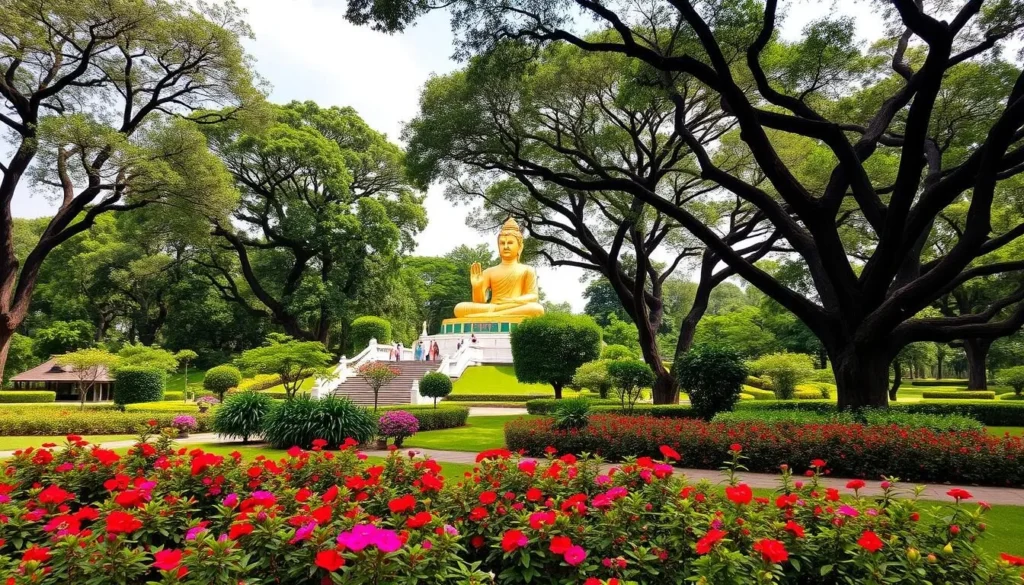
Viharamahadevi Park is Colombo’s oldest and largest public park, named after a revered Sri Lankan queen. The park offers a serene escape with its shady trees, flowering plants, and a golden Buddha statue. It’s an ideal place for a leisurely stroll or simply to sit and watch the world go by. The park is a vital breathing room in the bustling city, allowing visitors to observe local life in a peaceful setting.
Both Galle Face Green and Viharamahadevi Park are testaments to Colombo’s commitment to preserving green spaces within its urban landscape. Visiting these parks provides a well-rounded experience of Colombo, showcasing its natural beauty, cultural heritage, and community spirit.
Iconic Landmarks in Colombo
As you explore Colombo, you’ll encounter striking landmarks that embody the city’s cultural heritage and its leap into the future. These iconic structures not only define the city’s skyline but also tell the story of its history and development.
Lotus Tower
The Lotus Tower is a striking presence in Colombo’s skyline, standing at 351.5 meters as the tallest tower in South Asia. Its design, inspired by the lotus flower, symbolizes Sri Lanka’s flourishing development. You can experience the tower’s grandeur by visiting the observation deck on the 7th floor, which offers panoramic views of the city for $20 USD.
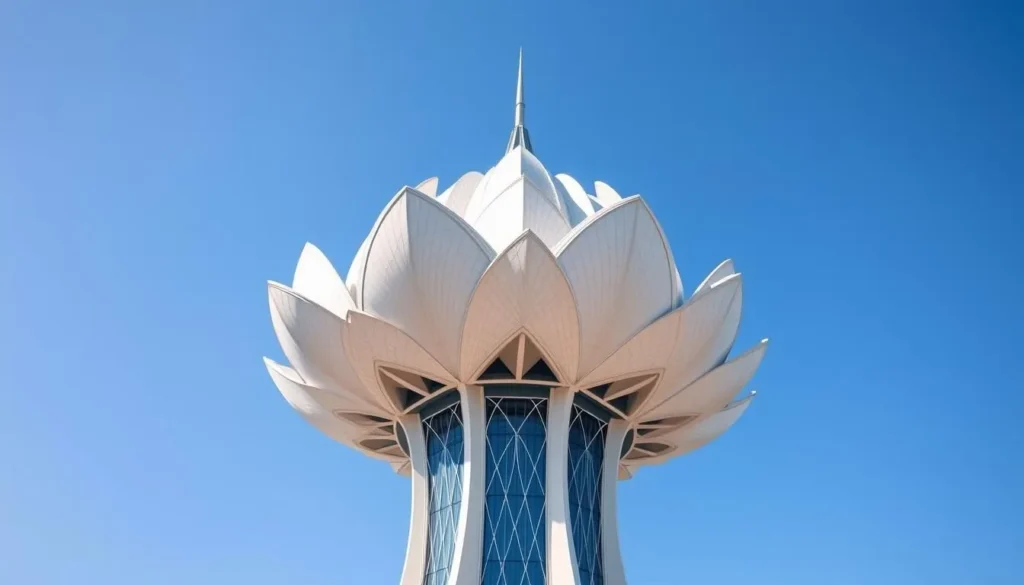
Galle Face Hotel
The Galle Face Hotel, built in 1864, is one of the oldest hotels east of the Suez Canal, boasting a rich history of hosting royalty and celebrities. Even if you’re not staying here, you can enjoy its colonial grandeur by having afternoon tea on the veranda or cocktails at the Checkerboard bar.
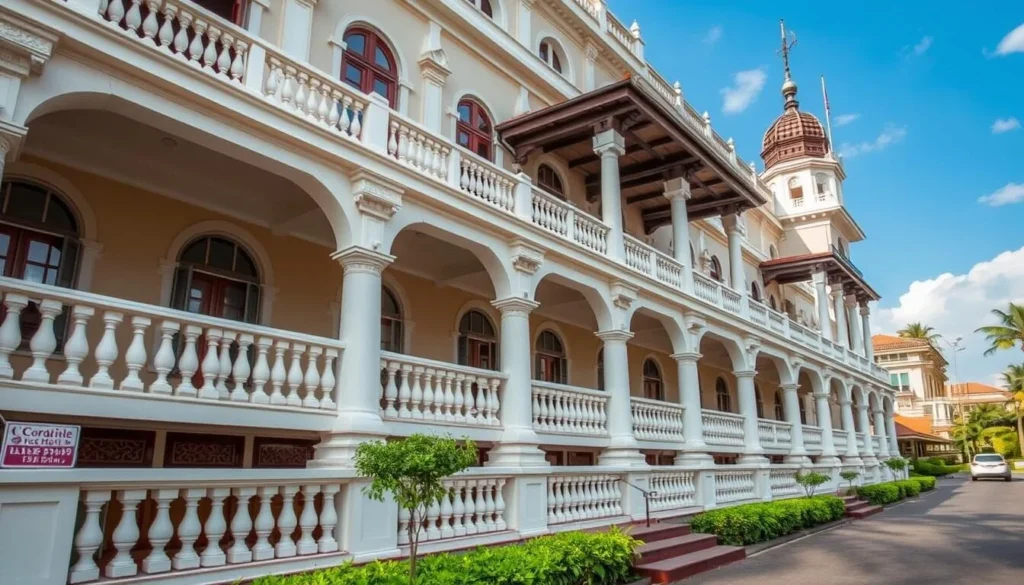
Culinary Delights in Colombo
When in Colombo, you are in for a treat as the city unfolds its culinary delights. Colombo’s culinary scene is a vibrant reflection of its history, culture, and geography, offering a wide range of delicious Sri Lankan food that caters to all tastes.
Ministry of Crab: A Seafood Haven
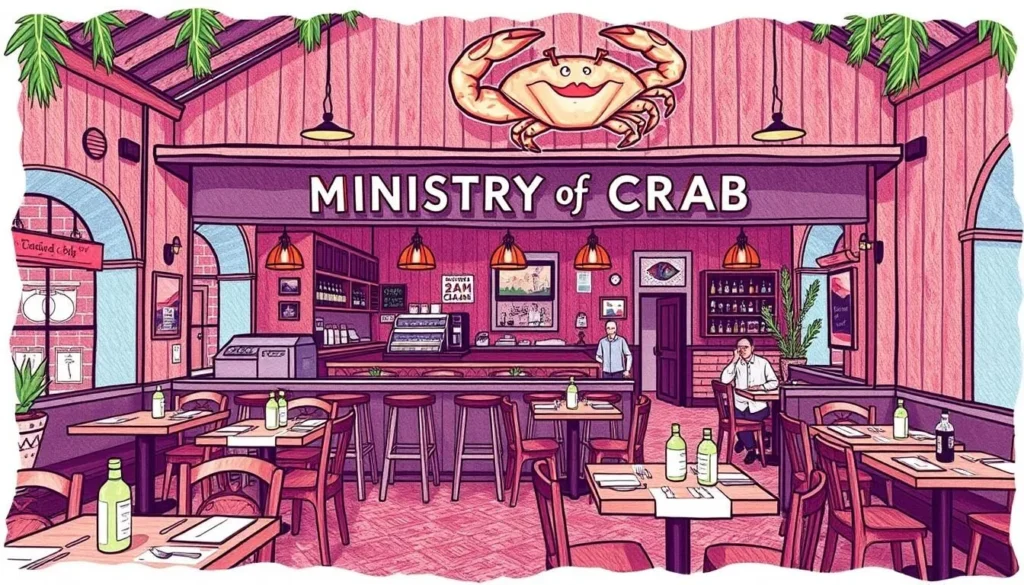
The Ministry of Crab is a world-renowned restaurant located in the historic Dutch Hospital. Co-owned by cricket legends Kumar Sangakkara and Mahela Jayawardene, along with chef Dharshan Munidasa, it offers an unparalleled seafood experience. The restaurant is famous for its enormous Lagoon Crabs, which can weigh up to 2kg. You can select your crab from the tank and choose from various seasonings, ensuring a fresh and personalized meal.
The Ministry of Crab is not just about crabs; it also serves famously large prawns, known as “Prawnzilla.” With dishes ranging from classic butter and garlic to spicy Sri Lankan styles, there’s something for every palate. It’s advisable to make a reservation in advance, especially on weekends.
Must-Try Sri Lankan Dishes and Where to Find Them
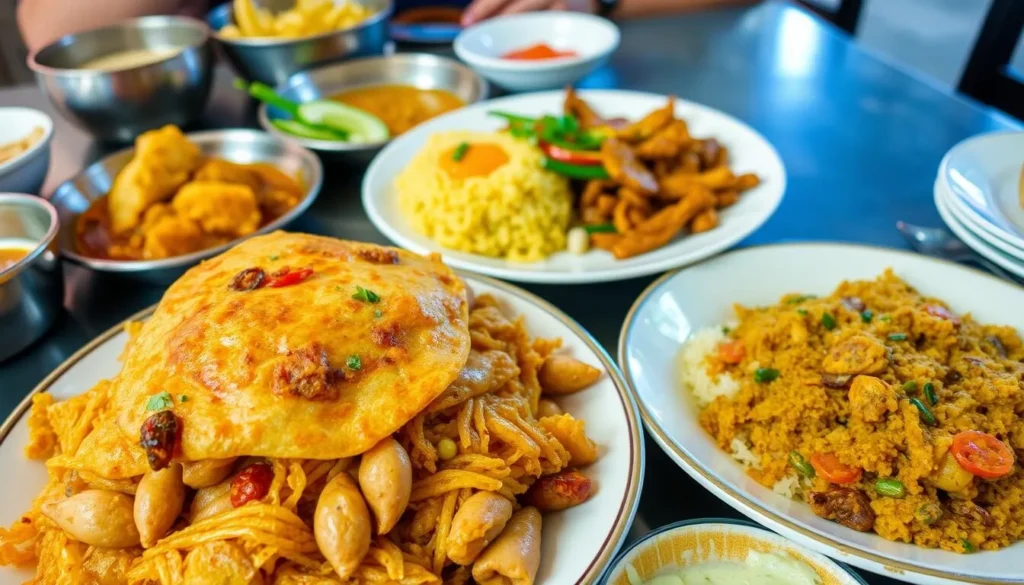
While the Ministry of Crab is a must-visit for seafood lovers, Colombo offers a diverse range of Sri Lankan cuisine beyond seafood. Be sure to try hoppers (bowl-shaped pancakes often served with egg), kottu roti (chopped flatbread stir-fried with spices and meat), and various curries that reflect the island’s rich cultural influences.
For authentic Sri Lankan food, visit local institutions like Upali’s for traditional fare or the more casual Pilawoos for late-night kottu and other street food favorites. Understanding the unique character of Sri Lankan cuisine, with its distinct spice blends and cooking techniques, will enhance your dining experience in Colombo.
Best Day Trips from Colombo
Day trips from Colombo offer a great way to experience the best of Sri Lanka, from ancient ruins to cultural landmarks. With a variety of options to choose from, you can pick a tour that suits your interests and makes the most of your time.
Sigiriya Rock Fortress
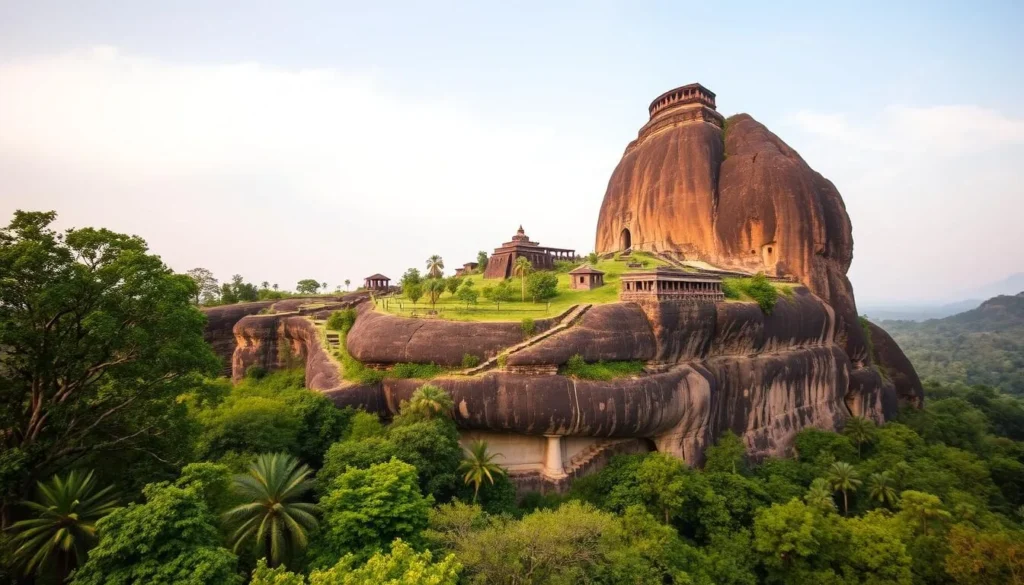
Sigiriya Rock Fortress is one of Sri Lanka’s most iconic sites, a massive 180-meter rock that was once home to a 5th-century palace. You can climb to the top for breathtaking views and explore the ancient ruins.
A day trip to Sigiriya typically includes a visit to the nearby Dambulla Cave Temples, a UNESCO World Heritage Site featuring five caves with 157 Buddha statues and ancient murals.
Kandy: The Cultural Capital
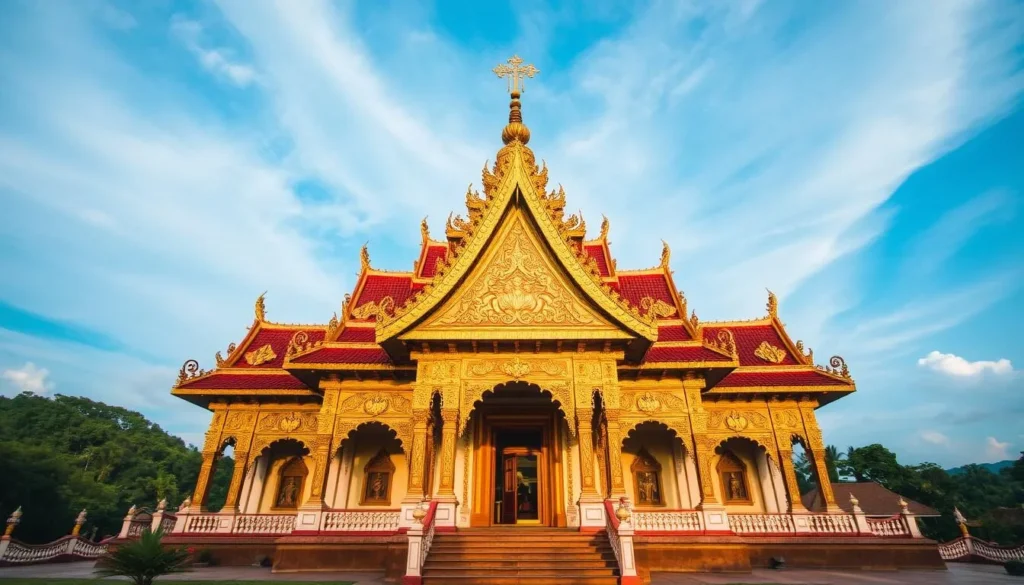
Kandy is Sri Lanka’s cultural capital and a must-visit destination for anyone interested in history and culture. The city is home to the Temple of the Sacred Tooth Relic, one of Buddhism’s most important shrines.
A day tour to Kandy usually includes a visit to this temple and other cultural landmarks, giving you a deep insight into Sri Lanka’s rich heritage.
Negombo and Galle
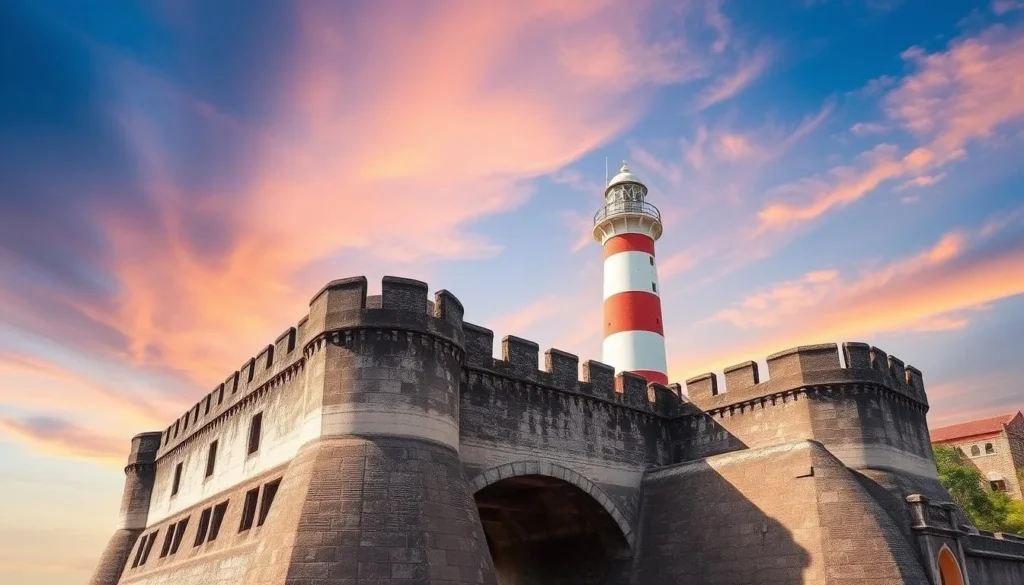
If you’re looking for a more relaxed day trip, consider visiting Negombo or Galle. Negombo is a charming beach town with Dutch canals and a relaxed atmosphere, while Galle is a UNESCO World Heritage Site with a well-preserved Dutch fort.
Both destinations offer a unique experience, from exploring Galle’s ramparts and lighthouse to enjoying Negombo’s beaches and seafood.
Top Colombo City Tours
With so much to see and do in Colombo, taking a guided tour is an excellent way to make the most of your visit. Colombo city tours offer a fantastic way to discover the city’s hidden gems and rich history. You can choose from a variety of tours that cater to your interests.
Private City Tours

A private city tour is an ideal way to explore Colombo’s highlights at your own pace. You’ll have the opportunity to ask questions and gain insights from your knowledgeable guide. A typical private tour lasts around 4 hours, covering historic sites like the Gangaramaya Buddhist Temple and the Old Dutch Hospital.
Benefits of a Private City Tour:
- Personalized experience tailored to your interests
- Flexibility to adjust your itinerary as you see fit
- In-depth knowledge from a local guide
Tuk-Tuk Adventures
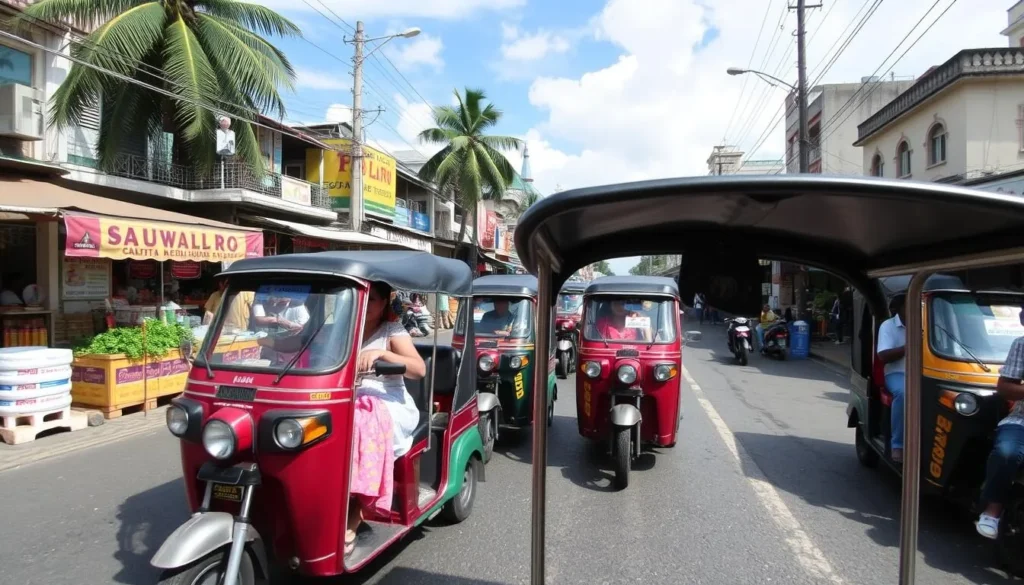
For a more adventurous experience, consider a tuk-tuk tour of Colombo. This classic Sri Lankan experience allows you to zip through the city’s traffic while your guide points out the sights. A typical tuk-tuk tour lasts 3-4 hours and includes stops at major attractions, along with a snack of fresh king coconut and lunch.
The thrill of exploring Colombo by tuk-tuk is an experience you won’t forget!
Highlights of a Tuk-Tuk Tour:
- Immersive experience of Colombo’s culture and daily life
- Opportunity to see a wide range of attractions in a short time
- Includes local cuisine and refreshments
Getting Around Colombo
Navigating Colombo is a breeze, with various transportation options at your disposal. Whether you’re looking for convenience, affordability, or adventure, Colombo has got you covered.
Tuk-Tuks and Taxis
The most popular way to get around Colombo is by hiring a tuk-tuk, those ubiquitous three-wheeled taxis that can zip through traffic. To use them effectively, always negotiate the fare before you start your journey, as most tuk-tuks don’t use meters. Expect to pay around 100 LKR (about $0.50 USD) per kilometer. Alternatively, you can hail a taxi or use ride-hailing apps like PickMe or Uber for more predictable pricing, though be aware that prices surge during rush hours.
Public Transportation Options
For a more authentic experience, consider using public buses, which are budget-friendly but can be crowded. Another option is the commuter trains, which are inexpensive and offer a glimpse into everyday Sri Lankan life, though comfort is basic. Here are some tips for using public transport:
- Be prepared for crowds and chaos.
- Validate your fare before boarding.
- Keep an eye on your belongings.
![]()
Where to Stay in Colombo
Colombo offers a diverse range of accommodations to suit every traveler’s needs. You can choose from luxury hotels, mid-range options, or budget-friendly stays, depending on your preferences and budget.
Luxury Accommodations
For a luxurious stay in Colombo, consider hotels like the historic Galle Face Hotel, the modern Shangri-La, or the elegant Taj Samudra. These hotels offer world-class service and amenities, with prime locations.
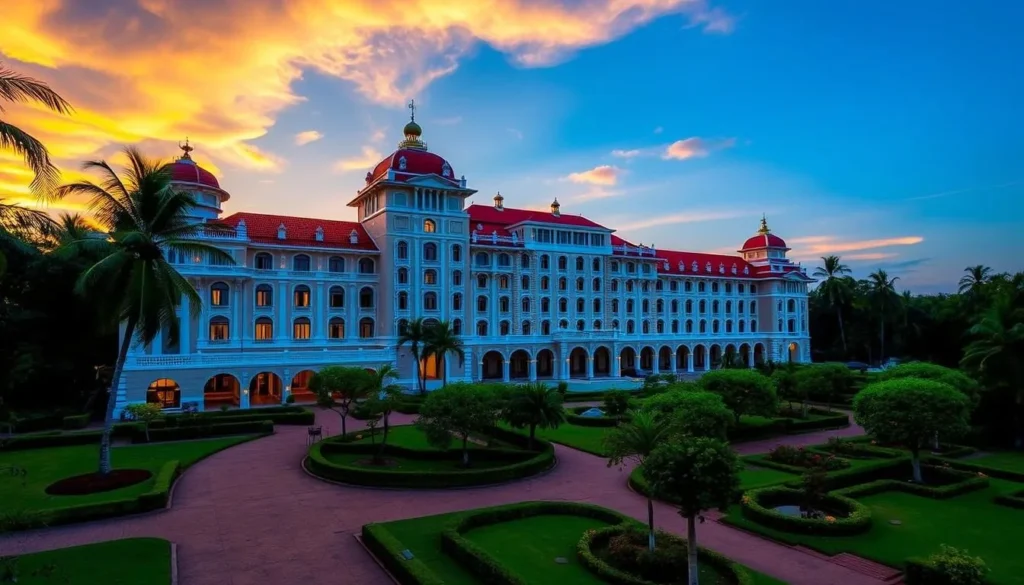
Mid-Range Options
If you’re looking for mid-range options, Fairway Colombo near the Dutch Hospital, Cinnamon Red, or OZO Colombo are great choices. They offer comfortable rooms, good facilities, and convenient locations at reasonable prices.
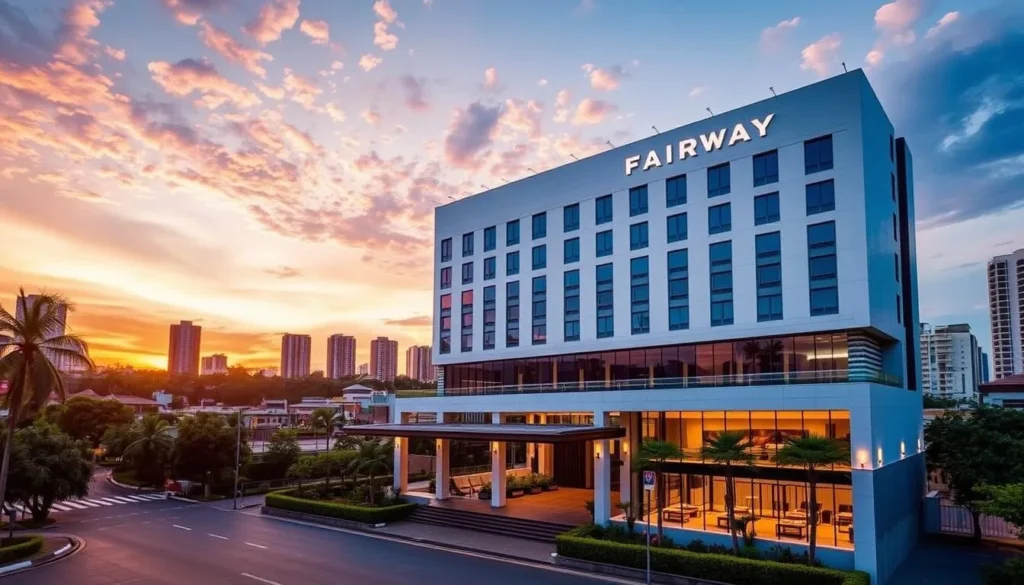
Budget-Friendly Stays
For budget-friendly stays, consider Clock Inn Colombo, Colombo City Hostel, or YMCA Colombo. These options allow you to save money while still enjoying clean accommodations and meeting fellow travelers.
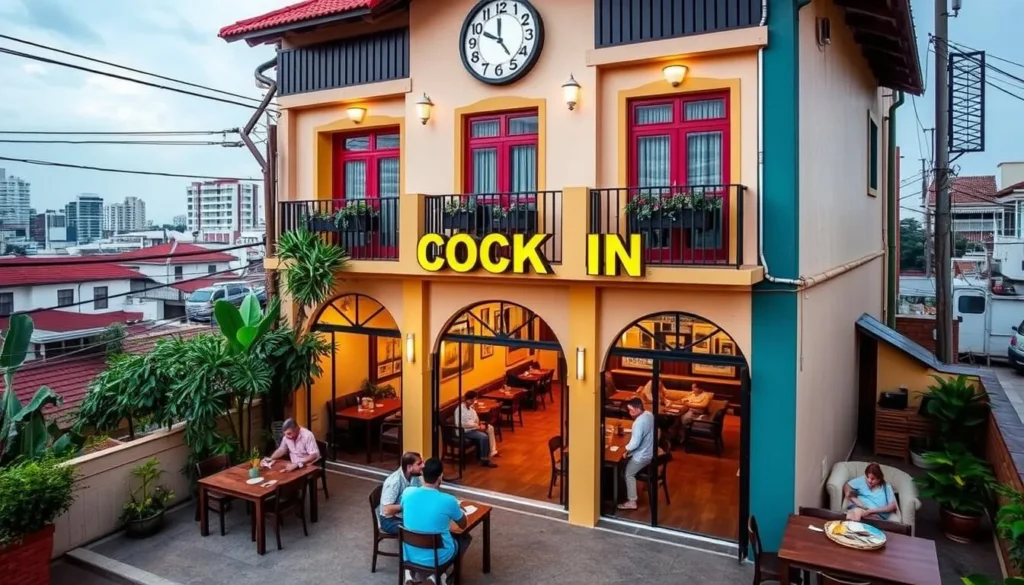
When choosing your accommodation, consider the neighborhood carefully. Fort and Pettah are great for history and markets, while Cinnamon Gardens offers upscale residential charm. You can also opt for apartment rentals or boutique guesthouses for longer stays or if you prefer more space and the option to self-cater.
Best Time to Visit Colombo
When planning your trip to Colombo, Sri Lanka, understanding the best time to visit is crucial for a pleasant experience. The city’s tropical climate means that it is warm throughout the year, but certain periods are more favorable than others.
The best time to visit Colombo is between November and February, when the city experiences its dry season and relatively cooler temperatures, averaging around 27-29°C (80-84°F).
Weather Patterns and Seasonal Considerations
Colombo’s weather is characterized by high humidity throughout the year, making lightweight, breathable clothing essential. The city experiences two monsoon seasons: the southwest monsoon from May to September, and the northeast monsoon from October to January, although the latter primarily affects the eastern coast.
- Plan your visit between November and February for the most pleasant weather.
- Avoid the monsoon seasons if possible, as they can bring heavy rainfall.
- Consider visiting during the shoulder seasons (March-April or October) for fewer tourists and lower prices.
- Be prepared for high humidity and heat, regardless of when you visit.
- Check the local festival calendar, as these events can offer unique cultural experiences but may also attract larger crowds.
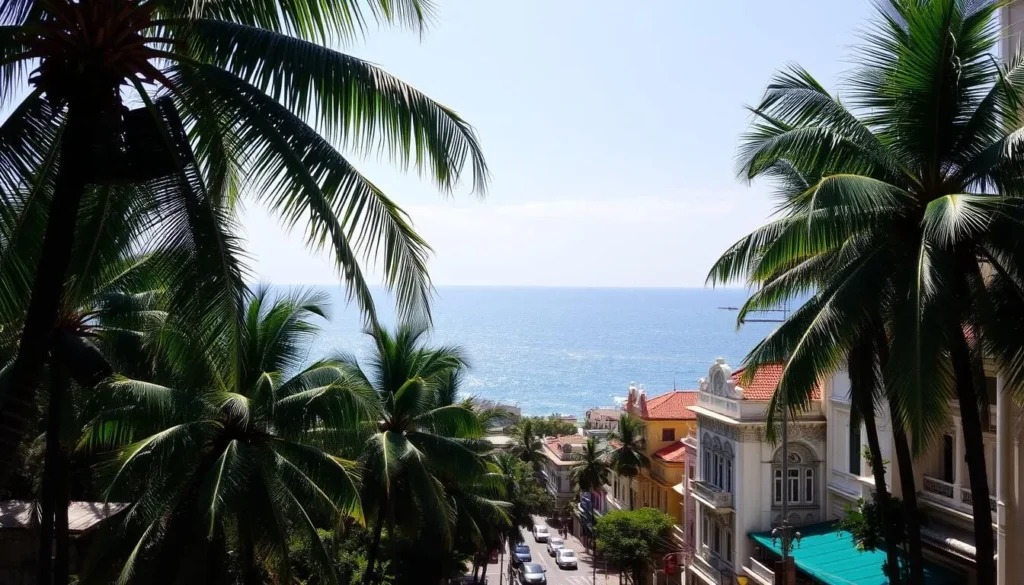
Conclusion: Making the Most of Your Colombo Experience
Colombo’s charm lies in its ability to balance tradition with modernity, making it a fascinating destination for any traveler. You will be captivated by the city’s unique vibe, warm people, and delectable food.
To truly experience Colombo, allocate at least 2-3 days to explore its historical sites, cultural experiences, and culinary adventures. Connect with locals through guided tours or conversations with shopkeepers to gain a deeper understanding of the city.
Consider Colombo as a bookend to your Sri Lanka journey, spending a few days here at the beginning and end to orient yourself and decompress. This will give you a well-rounded understanding of Sri Lankan life and the country’s rich history.
The above is subject to change.
Check back often to TRAVEL.COM for the latest travel tips and deals.
